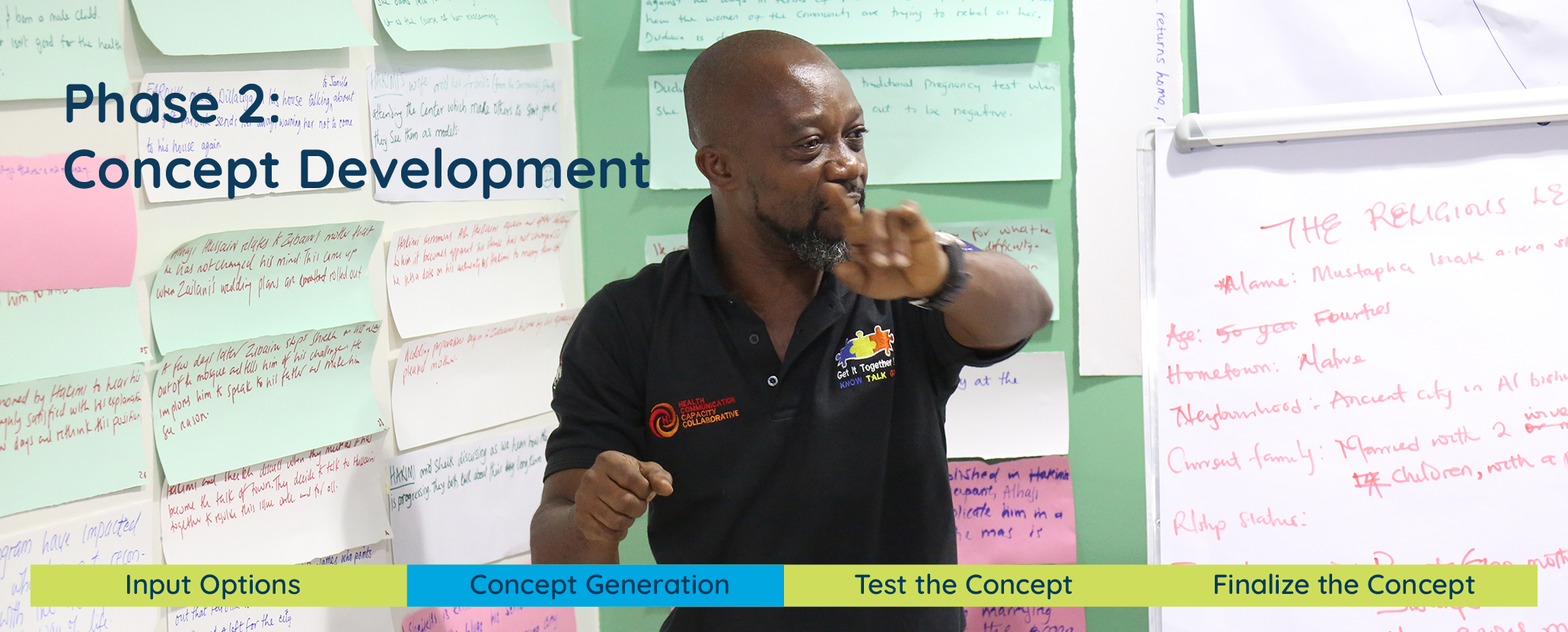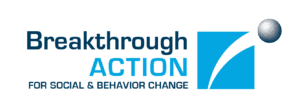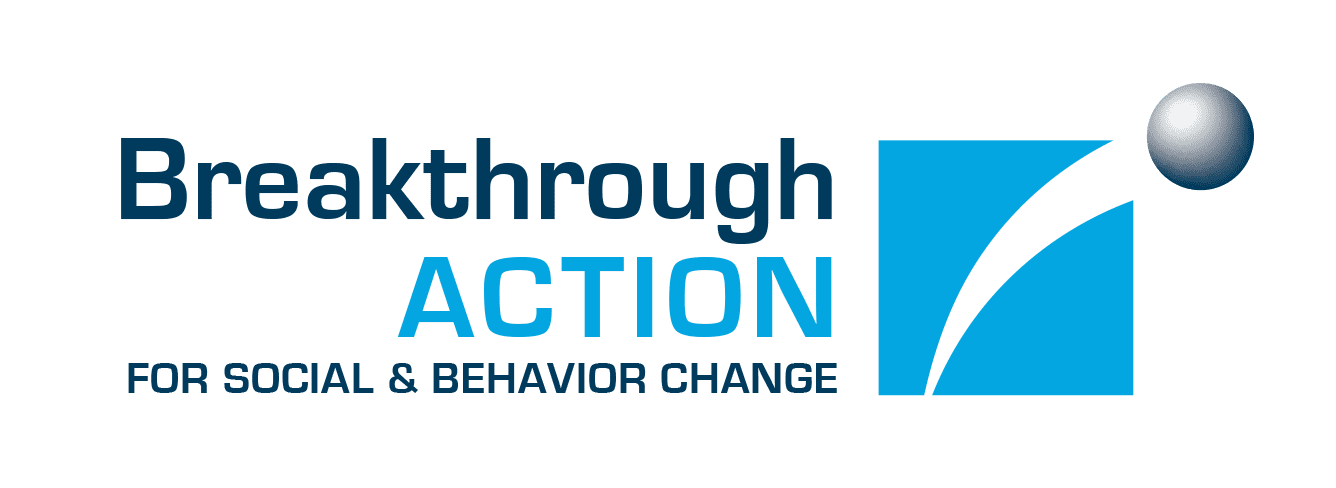Creative Concept Generation

The Concept Development phase involves using the creative brief to guide generation of creative concept ideas, testing those ideas with the intended audience, and using their feedback to select a single creative concept. This iterative process of testing ideas involves incorporating feedback from the intended audience and retesting.
Creative Concept Generation
How might we grab our audience’s attention to deliver the message?
By the end of this step, your team will have refined their ideas into storyboards to test among the intended audience and identify the most compelling ones.
How to conduct this step and achieve its main objectives:
Creative Concept Generation Workshop
A creative concept, or “big idea,” is the overall theme for your campaign. It should capture your intended audience’s attention, evoking an emotional response and subsequent action. As a unique and clearly defined idea that drives the campaign, the creative concept also unifies your theme across messages and channels.
A creative concept is more than a slogan or catchphrase, although it may include a headline, tagline, and key visual elements. It can be challenging to move participants away from generating such slogans and towards thinking of creative concepts that can form the basis of a campaign. During the concept generation stage, more ideas are better, and the good ideas will rise to the top.
In the beginning, you should budget more time than you expect for concept generation. Sometimes just one extra day can bear extraordinary results because participants gain experience that helps them think creatively. Participants thus should include a wide group of stakeholders, including the intended audience if relevant and creative professionals as identified under the Decision Point about Creative Agencies.
Workshop Agenda and Presentations
Suggested time:
2 days
Participants:
Core design team; stakeholders
Example: Concept Generation Workshop Agenda and Presentations
This example includes an agenda and presentations to facilitate a workshop to generate creative concepts. The workshop can be held as a two-day event or as part of a longer, multi-day, creative concept development workshop.
Effort required:

Landed Ideas, Snapping, and Passion Voting
Suggested time:
1–3 days, as part of a longer workshop
Participants:
Core design team; stakeholders
Instructions: Landed Ideas, Snapping, and Passion Voting
Ideation emphasizes quantity over quality and then narrows the focus to the best ideas. A landed idea is a tool for capturing ideas for SBC campaigns; snapping is a tool for consolidating similar ideas; and passion voting identifies the best ideas. This two-page document explains these methods in greater detail, including examples of how these approaches can be used in the workshop.
Effort required:

Storyboarding Workshop
The next step in the concept generation process is to further refine the initial creative concepts and create storyboards to demonstrate how the concepts can be used to deliver the message. This step can be included in the creative concept generation workshop or held later, depending on the time available. All participants chosen to create a storyboard should have previously participated in the creative concept generation workshop, although you may reduce the number of participants to improve focus and create higher-quality outputs. The same creative professionals should attend.
Storyboards
Suggested time:
1–2 days (plus 1–2 days refinement by a design agency)
Participants:
Core design team; creative professionals; limited stakeholders
Tool and Examples: Storyboards
The storyboard translates a landed idea into a comic-strip format with illustrations and text. Storyboards also are often used by production agencies to help plan scenes when shooting videos. You can use them during your testing phase so that the intended audience has something visible to react to. The Tools and Examples folder contains a tool to guide storyboard development, as well as examples of storyboards that received the most votes during a workshop and of storyboards that were refined with help from a design agency for concept testing.
Effort required:



